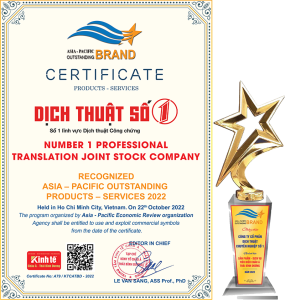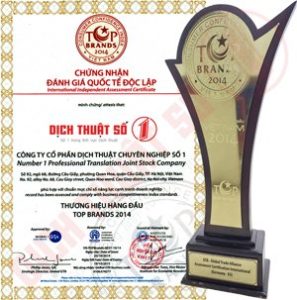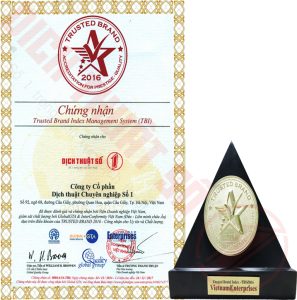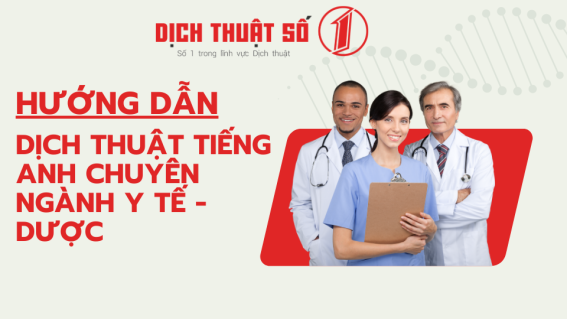Translation is a linguistic bridge between countries around the world, contributing to promoting cultural exchange, economy and international cooperation to take place faster. So, what is translation? What role does it play in today's life? Together No.1 Translation Learn about the nature, opportunities and challenges of this field in the article below.
>>>See more: Vietnamese Translation into 100+ International Languages
What is translation? The role of translation in today's market
Translation Overview
Translation What is translation? Translation is the process of transferring information from one language to another, both written and spoken. It involves understanding and interpreting the meaning of the original text and then producing an equivalent version in the target language. The original text is called the source text, and the language into which it is translated is the target language. The translation must be appropriate to the context, and must adhere to the grammar rules and writing conventions of both languages.
People often misunderstand that translation is simply a matter of finding corresponding words between two languages and translating them mechanically. But in reality, word-for-word translation does not take into account the context, grammar, conventions and idioms of the target language, which can lead to misunderstandings or inaccuracies in the translation.
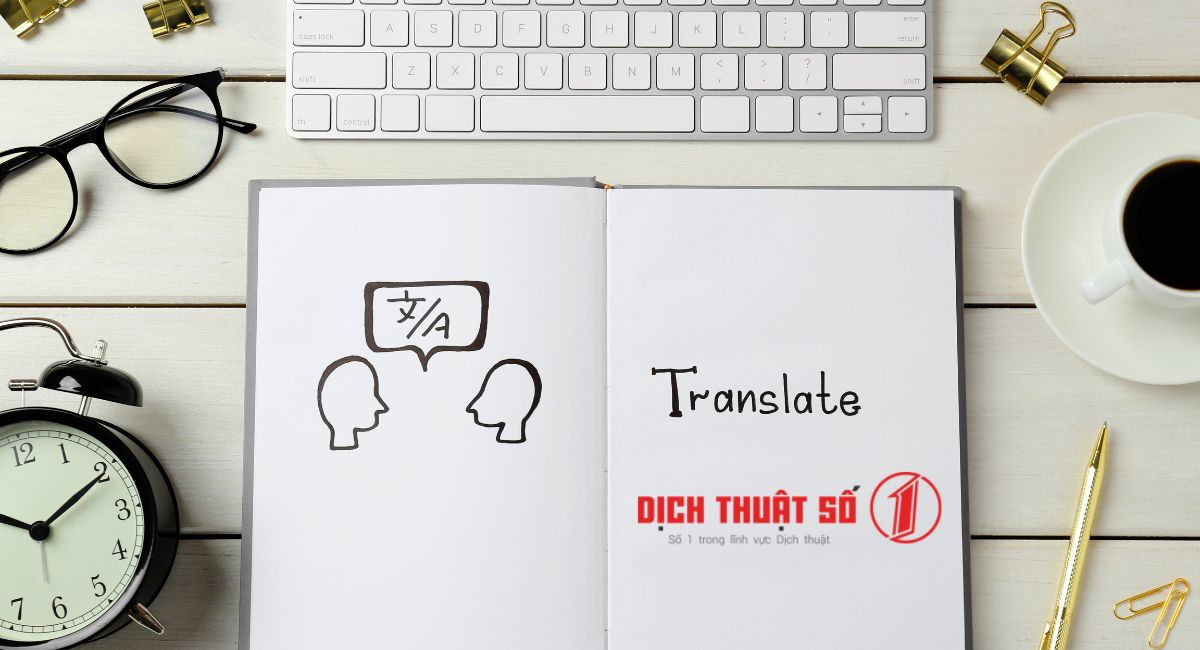
>>>See more: Criteria for Evaluating a Good Translation
The Role of Translation
Translation plays a key role in many fields, including:
- International communication: Help countries overcome language barriers, facilitating mutual understanding and cooperation.
- Business: Opening up opportunities for businesses to enter global markets, build strategic partnerships and expand their reach.
- Diplomatic: Acts as an important bridge in international negotiations and conferences, ensuring accuracy and efficiency in information exchange.
- Science: Promote the sharing of knowledge and research on a global scale, contributing to the common development of humanity.
- Culture: Transmitting culture, art and literature between countries, enriching global culture.
In the context of international integration, translation becomes an essential bridge between cultures, knowledge and markets, contributing significantly to the common development and prosperity of the world.
>>>See more: Native Translation: High Quality Translation By International Translators
What is the nature of translation?
What is the nature of translation? The main purpose of translation is to convey ideas and language content with the highest accuracy. The translator must ensure that the translated text does not change the meaning or point of view of the original text. The role of the translator is to “speak for” the author, which means that the information must be conveyed faithfully and accurately, without arbitrarily interfering or modifying the content.
Successful translation depends not only on correct writing but also on the ability to use language flexibly to fit the context of the original text. Translation includes two main forms:
- Translation: It is the process of converting a written text from one language to another without changing the meaning of the original text. Translation requires accuracy in conveying the content and spirit of the text, while also taking into account the structure and style of the target language.
- Interpretation: It is the process of converting information from one language to another in direct communication situations. Interpretation can be done in three forms: Simultaneous interpretation (simultaneous translation) and consecutive interpretation (translation)
Although translation and interpretation differ in form, both require accuracy, flexibility, and a thorough understanding of the language to ensure that information is conveyed properly. To perform effective translation, a translator needs to be trained and practiced in both oral and written translation skills.

>>>See more: Professional Translation Process at Translation Number 1
Steps and rules in translation
To ensure the translation process runs smoothly and professionally, translators need to follow specific rules and steps for each type of translation:
Translation (Written translation)
- Step 1: Read through the entire text to grasp the main ideas and understand the overall content.
- Step 2: Underline new technical words or phrases and use a dictionary or reference material to look up and clarify the meaning.
- Step 3: Read each sentence carefully and translate it to ensure correct meaning and grammar.
- Step 4: Check your translation again to correct errors (proofread), ensuring that the translated text is accurate and coherent, and comparing it with the original text to ensure that no meaning is lost.
Interpretation (Spoken Interpretation)
- Step 1: Equipped with in-depth knowledge in the field of interpretation.
- Step 2: Research documents before translating to understand context and technical terminology.
- Step 3: Prepare paper and pen to quickly take notes of important points during the interpretation process.
- Step 4: Focus on listening to the information being communicated, take notes of important words and phrases, and then translate them accurately.
Note: For students and beginners in the field of translation and interpretation, slow sentence analysis, careful listening, passive use of foreign languages, and reflexive skills training are very important to improve translation quality.

>>>See more: 7 Main Types of Translation Services
Opportunities and challenges in the field of translation
After understanding the concept and nature of translation, let's delve into the opportunities and challenges of this field in today's era.
Opportunities in the translation field today
Here are some reasons why a career in translation is an attractive option:
- Explore new sources of knowledge: Translators and interpreters have the opportunity to gain in-depth knowledge of different areas of the country they are interested in. This job not only opens up opportunities for you to travel and interact with many people from different countries, but you also get to work in diverse fields, thereby accumulating a lot of valuable knowledge and experience.
- Expanding relationships: Working in the translation industry offers the opportunity to meet many people from different fields, including successful and famous people. In particular, if you are a professional diplomatic interpreter, you have the opportunity to meet and work with high-ranking government figures. These relationships can support your future development.
- Diverse job opportunities: In the context of globalization, Vietnam is increasing international cooperation and participation in global organizations, which opens up many job opportunities for translators and interpreters. The more experience, the more opportunities.
- Attractive income: How much does a translator earn? The average salary for an interpreter is around 15 million VND/month and can be up to 200-400 USD/day when working at seminars and conferences. Compared to the general level, this salary is quite high and attractive.
- Promotion opportunities: The translation industry offers many opportunities for advancement due to its high competitiveness and demand for human resources. With extensive experience, you can advance to become a manager or diplomat. However, to be successful, you need to continuously improve your foreign language and professional skills, and constantly learn and develop.
>>>See more: Some Tools, Tips and Advice for Accurate Translation
Challenges in the field of translation
The translation industry, while fascinating, also presents challenges that require translators to constantly improve and strive. Here are some typical challenges:
- Multi-disciplinary knowledge and continuous knowledge update: Every field has its own terminology. Translators need to research and continuously improve their knowledge to ensure they have a good grasp of the specialized field they need to translate.
- Constantly updating languages: Language is always changing, developing new words and concepts. Translators need to keep up with these changes to avoid obsolescence and ensure that the translation is lively and appropriate to the current context.
- High pressure: Translators must ensure that information is conveyed with absolute accuracy. Even a small error in the translation can cause misunderstandings about the original content and meaning, leading to serious consequences for customers and reducing the company's reputation, causing unnecessary risks.
- Create attraction: Translations must not only be accurate, but also engage the reader. Translators need to use appropriate language, create rhythm, and convey the message effectively.
- Must know how to grasp psychology in communication: The ability to observe and understand the speaker's psychology is very important in translation. In addition to language, the translator needs to pay attention to the speaker's gestures and attitudes to choose appropriate words and convey the right meaning.
- Cultural issues: Every country has its own culture and communication style. Cultural understanding is essential to avoid mistranslations. Translators and interpreters need to understand not only the language but also the culture of the country.

>>>See more: Difference Between Translator and Interpreter
The conditions you need when you want to work as a translator
If you are looking to pursue a career in translation, understand the requirements needed to do this job well:
Multilingual
To translate effectively, you must be fluent in at least two languages, including the source language (the language of the text to be translated) and the target language (the language to be translated into). For example, when translate english to vietnamese, you need to have an in-depth understanding of both languages, including every nuance and implication in the text, to ensure an accurate translation.
Field expertise
In addition to language skills, you also need expertise in the field you are translating. For example, if you are an English translator translating a medical book, you need to have medical knowledge and be proficient in English medical terminology to ensure accuracy.
>>>See more: Medical English Translation
Precision and attention to detail
Translation is an art that requires meticulousness and attention to every small detail, helping to avoid errors in language or style, thereby creating high-quality translations.
Research skills
Even if you are fluent in a foreign language, you will still encounter unfamiliar words or terms. Search skills will help you quickly find the necessary information, supplement your knowledge and improve your translation skills. You can use dictionaries and translation support tools such as Transit, DejaVu, SDLX, Trados.
Teamwork skills
Translation is not usually an independent job. Translators and interpreters often have to work in teams. Teamwork skills will help you organize your work effectively, overcome weaknesses, and learn from your colleagues.
Application of information technology
Information technology plays an important role in translation. You need to be proficient in using word processing software, editing translations, and managing translation memories. Continuously improving your technology skills will help you work more effectively.

>>>See more: 9 Steps to Perfecting a Professional Document Translation
In short, the above article has answered in detail the question of what is translation? Hopefully, through the article, you have a deeper insight into the field of translation and its important role in connecting the world. Translation is not only the work of converting languages but also the art of conveying meaning, culture and emotions. With its increasing importance in the context of globalization, understanding translation helps us to appreciate the complexity and value of this work.

